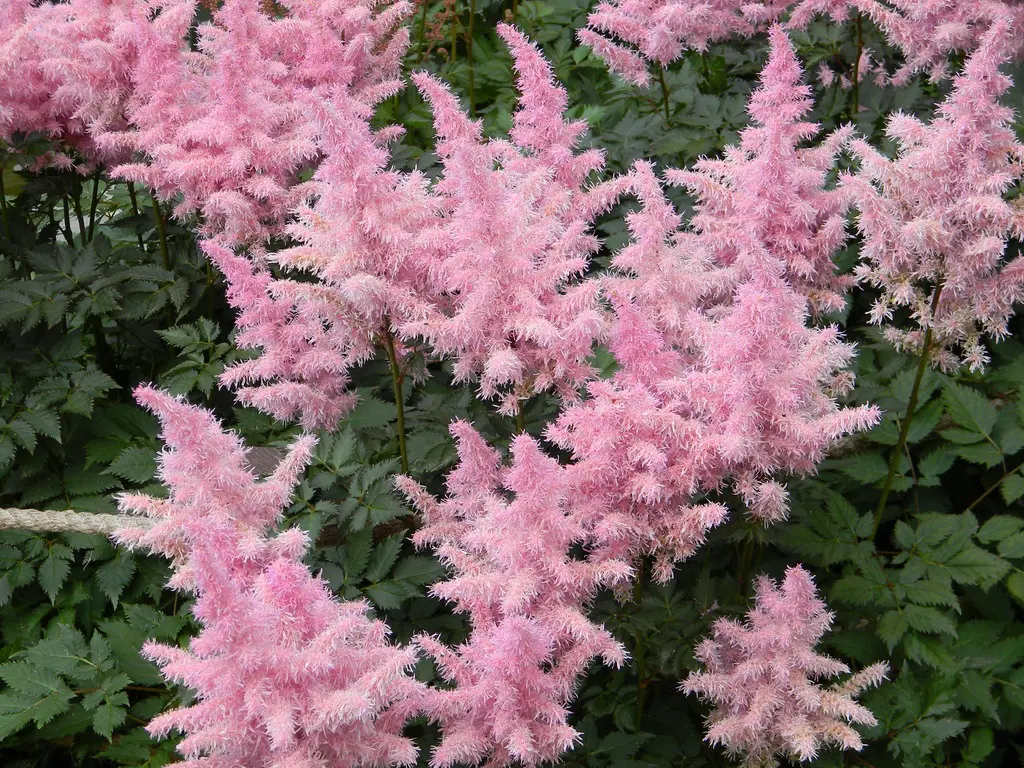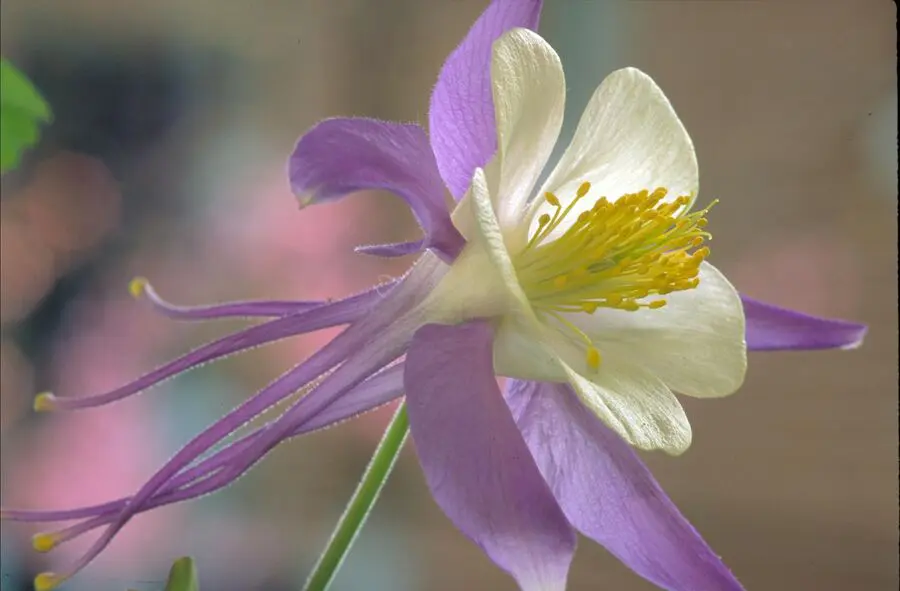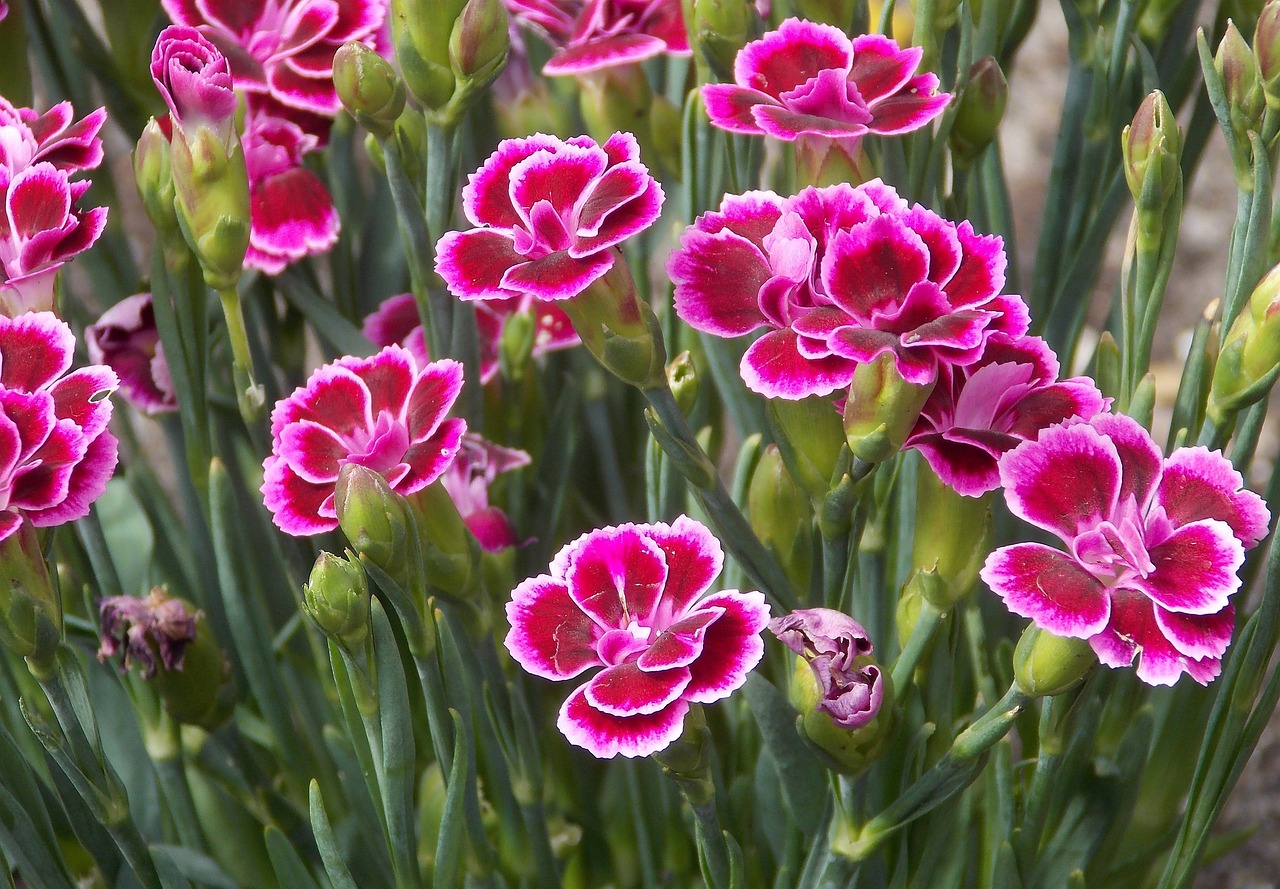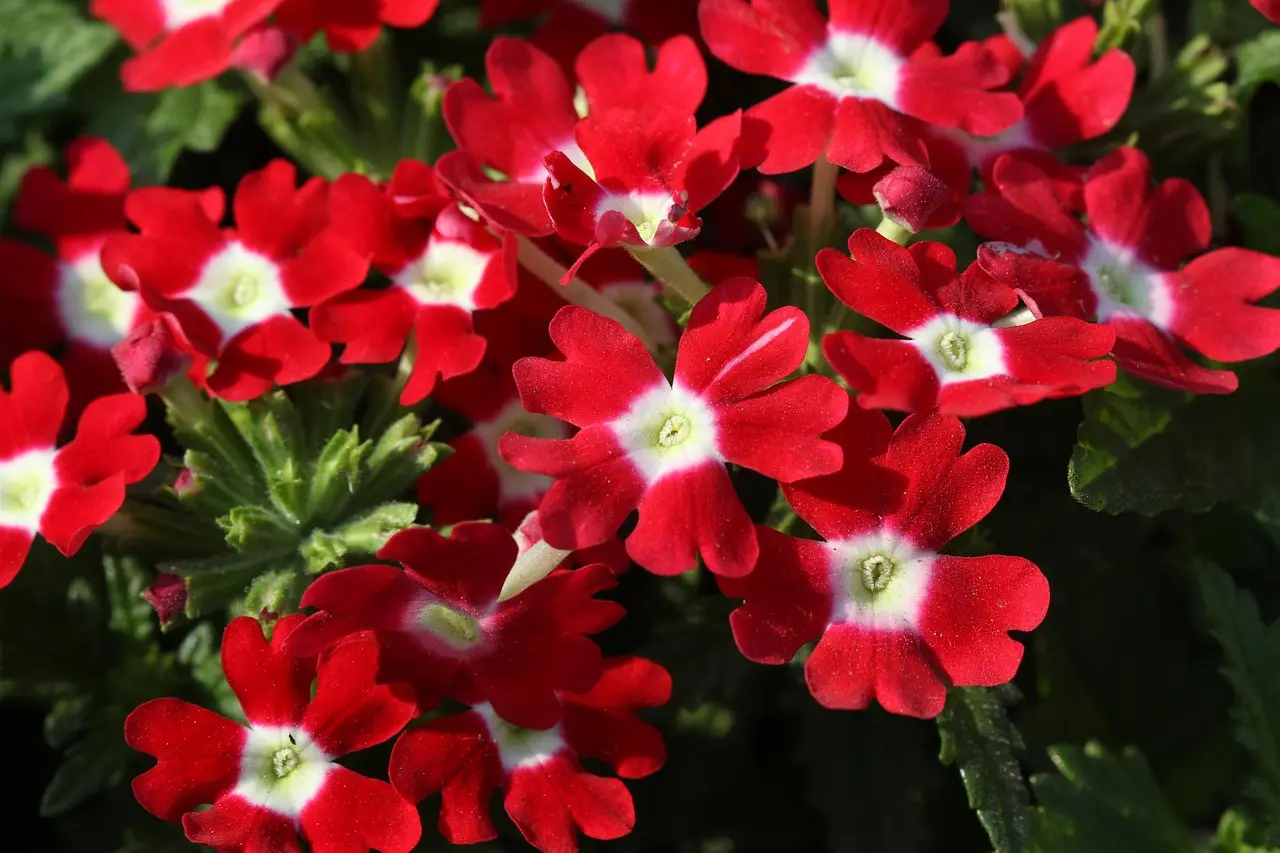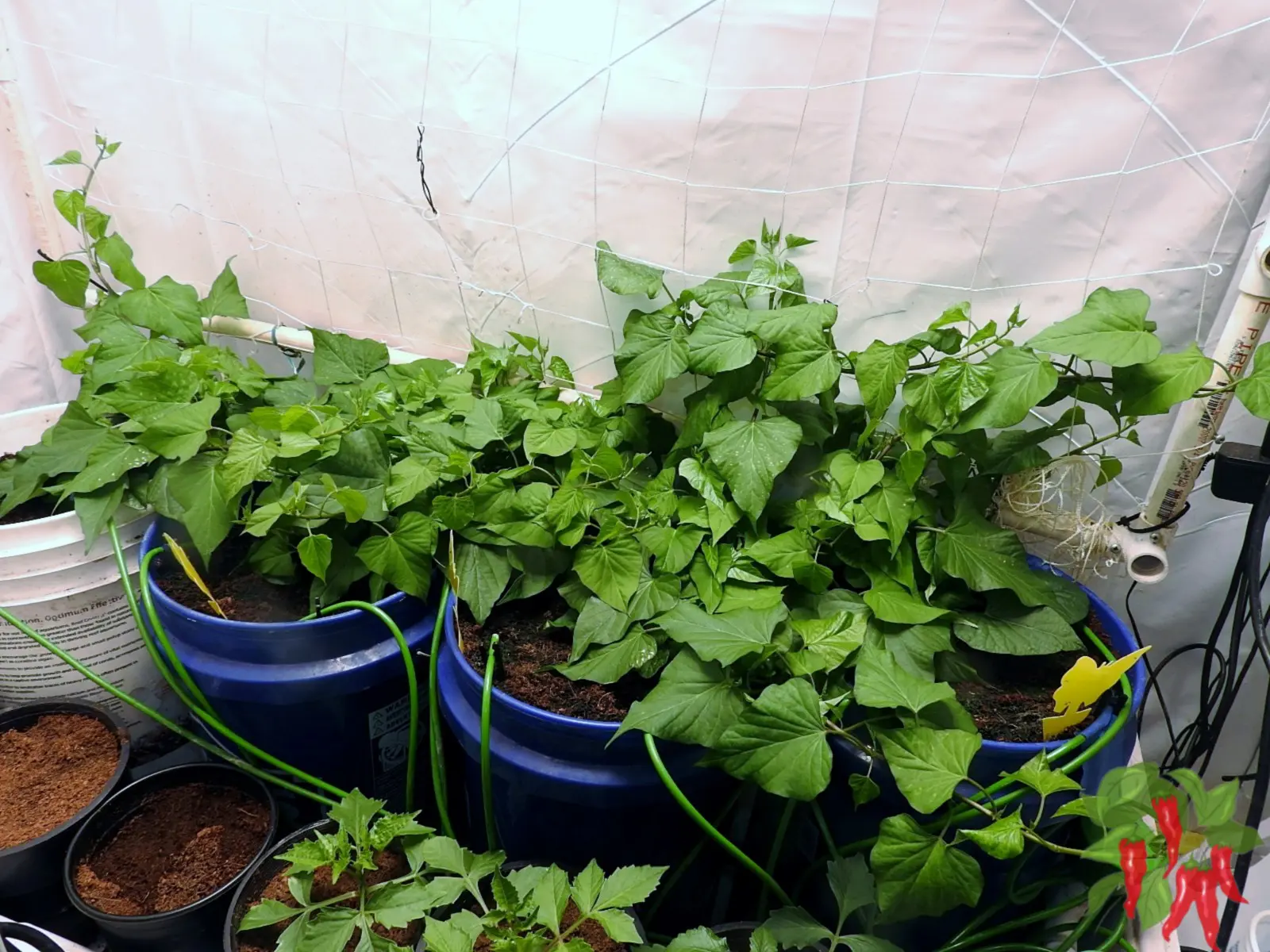This post contains affiliate links. If you buy something from one of our links we may earn a commission. Thanks
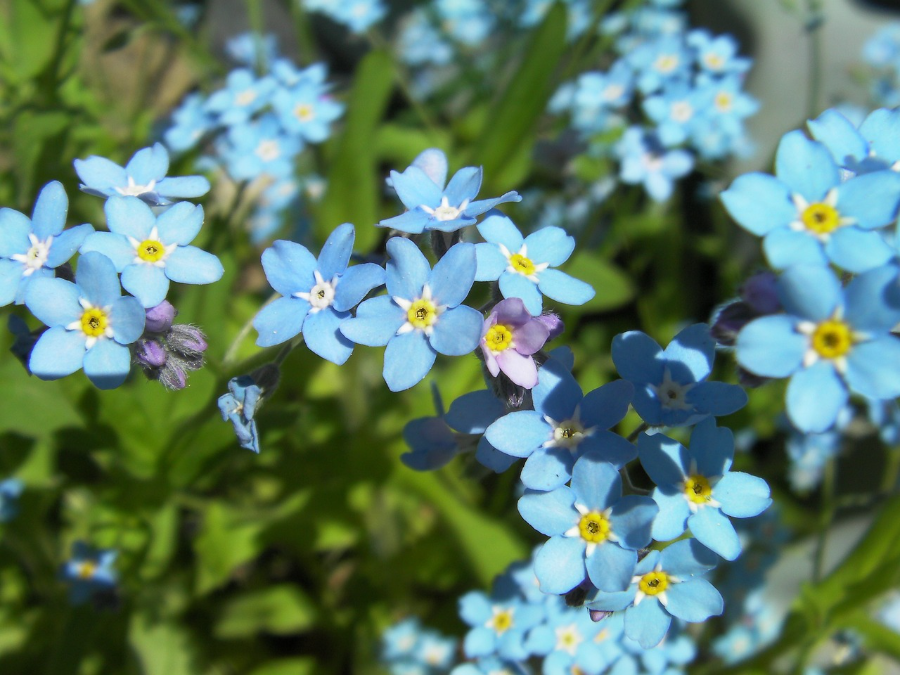
Discover the joy of nurturing Forget-Me-Not flowers in pots. This easy guide shares tips on planting, care, and FAQs, making your gardening experience a breeze!
To grow Forget-Me-Not flowers in pots, select a container with good drainage and use a quality potting mix. Sow seeds or plant seedlings in early spring. Keep the soil consistently moist but not waterlogged. Place the pot in a location with partial shade for best results. Fertilize lightly using a balanced fertilizer.
Stepping into a garden adorned with Forget-Me-Not flowers in pots is like stepping into a watercolor painting brought to life.
These enchanting blooms, with their delicate petals of blue, are more than just pretty faces.
They hold within them a resilience that can surprise you, their vibrant colors whispering stories of love and remembrance from across centuries.
Growing Forget-Me-Nots in Pots is a delightful journey, one where the charm of these petite blossoms meets the practicality and versatility of container gardening.
Join us as we explore this captivating world, uncovering the secrets and advantages of cultivating Forget-Me-Nots in pots.
Introduction: Forget-Me-Not Flowers In Pots
Imagine a burst of blue blooms gracing your patio, a delightful pop of color on a sunny day.
Yes, we’re talking about Forget-Me-Not flowers in pots. This charming plant, known for its brilliant blue blossoms and heart-shaped leaves, can be an exciting addition to your gardening endeavors.
Whether you’re a seasoned gardener or just starting out, this guide will share the ins and outs of potting and nurturing these unforgettable blooms.
So, get ready to roll up your sleeves and dive into the world of Forget-Me-Nots!
The Magic of Forget-Me-Nots
Let’s start with a little introduction to these charming flowers.
Forget-Me-Nots are the common name given to the scientific genus Myosotis, They are a delightful addition to any garden with their signature sky-blue spring flowers and yellow centers.
Usually spring bloomers, these little beauties are native plants cherished for their unique color and soft, romantic appeal.
Forget-Me-Nots are more than just flowers. They’re tiny messengers of true love, respect, and undying memories.
Giving these small blooms to someone is a promise of remembrance, a symbol of your faithful devotion.
They are simply a way to say, “You are loved, and you won’t be forgotten.”
Perennial Performers
One of the joys of having Forget-Me-Nots is that they’re perennial. Yes, you heard right.
These little blue wonders will return to grace your pots year after year.
With a little care and attention, they can provide a delightful continuity in your gardening journey.
Their Blooming Season
When can you expect these little bursts of blue to show up?
Typically, Forget-Me-Nots bloom in the spring, filling your pots with a beautiful sea of blue just when everything else in the garden is starting to wake up.
Blooming Beauties
Wondering when your Forget-Me-Nots will dazzle with their blue blooms?
Well, these gems are quite generous with their flowering. Once they start blooming in spring, they continue to cheer up your garden with their delightful blossoms throughout the growing season.
Yes, they are continuous bloomers, providing your pots with a delightful cascade of color for months on end.
Now, that’s something to look forward to, isn’t it?
Spreading the Love
Now, if you’re wondering whether Forget-Me-Nots spread, they absolutely do!
With proper care, they can multiply and fill up your pots, providing an even more vibrant display of their lovely blue flowers.
In some areas, they are actually considered a noxious weed. But don’t worry, in pots, their spreading habit can be easily managed.
A Non-Toxic Beauty
Now for the safety concern. The good news is Forget-Me-Nots aren’t known to be poisonous.
However, it’s always best to keep them out of reach of pets and children who might have a nibble, just to be safe.
What Are The advantages df Growing Forget-Me-Nots In Pots?
Finally, the question on everyone’s mind. Why grow Forget-Me-Nots in pots?
Well, there are several advantages. For one, they’re compact and suitable for small spaces like balconies or patios.
Growing them in pots also allows for better control over their growth and makes it easier to move them around based on sunlight needs.
Plus, who doesn’t love the versatility of having portable beauty in their garden?
Space Management: Pots allow you to grow Forget-Me-Nots in confined or limited spaces, such as balconies, patios, or small yards.
Control over Growth: As Forget-Me-Nots can spread quickly, pots provide a boundary that helps manage their growth, preventing them from taking over other plants in your garden.
Mobility: Pots make it easy to move your plants around. This allows you to adjust the plant’s location according to sunlight availability, temperature changes, or decorative needs.
Soil Control: When planting in pots, you have complete control over the type and quality of soil used. This is advantageous if your garden soil isn’t ideal for Forget-Me-Nots.
Disease and Pest Management: Pots can help prevent the spread of diseases and pests from one plant to another, contributing to healthier plants.
Versatility: Pots come in a variety of sizes, styles, and materials, adding to the aesthetic appeal of your space.
You can choose a plastic pot or one that matches your decor and complements the beauty of the Forget-Me-Not flowers.
Forget-Me- Not Uses
Consider using Forget-Me-Nots as a decorative border:
Their vivid blooms can outline other plants or guide a pathway, bringing a burst of color to your garden while drawing in beneficial pollinators such as bees and butterflies.
Introduce them to your rock gardens:
With their petite stature and delicate allure, Forget-Me-Nots seamlessly fit into rock gardens, enhancing their aesthetic appeal.
Woodland Groundcover
The woodland-dwelling Forget-me-not, scientifically known as Myosotis sylvatica, is a delightful ground cover that unfurls clusters of blue blossoms above its green foliage come springtime.
While it often finds a home amidst spring-blooming bulbs, this versatile plant isn’t confined to just that setting.
From containers to woodland settings, garden borders, and the whimsical environment of cottage gardens, Forget-Me-Nots effortlessly adapt, bringing their unique charm wherever they grow.
Forget-Me-Not Seeds
Chinese Forget Me Not Wildflower Seeds
Ready to dive into the world of Forget-Me-Not seeds?
Well, get excited because this is where your gardening adventure truly begins.
There’s something truly magical about nurturing these tiny seeds into vibrant blooming plants.
Whether you’re new to this or an experienced gardener, navigating the path from seed to bloom is a journey full of joy, anticipation, and yes, a little bit of patience.
In this section, we’re going to explore everything from how to plant these tiny miracles, the right depth for planting, tips for potting, and what to do after they’ve flowered.
So, let’s get started and help those Forget-Me-Nots thrive!
Planting Basics for Forget-Me-Not Seeds
Planting Forget-Me-Not seeds is a fun and straightforward process.
Start by filling your pot with a good-quality potting mix. Sprinkle the seeds on top, and then lightly press them into the soil with your fingers.
Water the seeds gently and keep the soil moist, but not waterlogged.
Perfect Depth for Forget-Me-Not Seeds
Wondering how deep to plant those tiny Forget-Me-Not seeds? The answer is – not very deep! These seeds only need to be lightly pressed into the soil, and they’ll start sprouting in no time.
The Art of Planting Forget-Me-Not in Pots
When it comes to potting Forget-Me-Nots, remember to ensure well-drained soil.
Choose a pot with drainage holes and consider adding some perlite or vermiculite to the potting mix.
These plants prefer moist soil but also well-drained soil, so they’ll thrive in a pot that allows excess water to escape.
Post-Flowering Care for Forget-Me-Nots
After your Forget-Me-Nots have put on their stunning floral show, it’s time for a little TLC.
You can cut back the plants to encourage a second flush of flowers.
If you notice any dead or diseased plant material, remove it to keep your plants healthy.
The Cold Hardy Nature of Forget-Me-Nots
Is the forget-me-not cold hardy? Absolutely!
These resilient little plants can survive freezing temperatures, so they’re a great choice for gardeners in colder climates.
Just make sure to provide them with some protection during particularly harsh weather.
When To Sow Forget-Me-Not Seeds
Curious about when to plant Forget-Me-Not seeds? Here’s the scoop.
If you’re eager for a beautiful blue display next season, the optimal sowing period is from spring through to August.
If you sow in early spring, you might even see your plants blooming by fall – how exciting is that?
However, if you’re a patient gardener, consider sowing your seeds in the fall. This way, your Forget-Me-Nots will take their sweet time over winter and reward you with a spectacular floral show a year from the following spring.
So, choose your sowing time based on your blooming preference!
Optimal Time to Sow Forget-Me-Not Seeds
Timing is crucial when it comes to sowing Forget-Me-Not seeds. Ideally, you want to sow these seeds in the late summer months to early fall.
This will give the plants time to establish themselves before the chill of winter sets in, and you’ll be rewarded with a dazzling display of blue flowers in spring.
Spring Sowing for Forget-Me-Not Seeds
The perfect time for sowing Forget-Me-Not seeds can also be in the spring.
As the ground starts to warm up and the days get longer, it’s the ideal moment to sprinkle your seeds into the pot.
Give them a light press into the soil and make sure to keep the soil moist.
By summer, your Forget-Me-Nots will be ready to offer their beautiful blooms, adding that delightful splash of blue to your garden.
So, mark your calendars for spring and prepare to embrace the gardening season.
Some Forget-Me-Nots are biennial and some perennial
Ah, the diverse world of Forget-Me-Nots! There are indeed some varieties of these charming flowers that are biennial and some that are perennial.
Biennials, such as the popular Myosotis sylvatica, often known as Wood Forget-Me-Nots, complete their lifecycle over two years.
The first year is generally dedicated to growth, and the flowers make their grand appearance in the second year.
On the other hand, we have perennial Forget-Me-Nots like the Myosotis scorpioides, often referred to as Water Forget-Me-Nots.
These resilient plants can bloom year after year, adding consistent beauty to your garden.
So, whether you choose a biennial or a perennial Forget-Me-Not, both promise to bring a delightful burst of blue to your pots and planters!
How to Care for Forget-Me-Nots
Now that you’re familiar with the journey of Forget-Me-Not seeds, let’s delve deeper into the care of these charming flowers.
The great news is, Forget-Me-Nots are often self-sowing so they can pretty much take care of themselves thanks to their self-seeding nature!
They drop seeds that sprout new plants with minimal effort on your part.
But, as easy-going as they might be, understanding their needs will ensure they not only survive but truly thrive.
From understanding their sunlight needs to the right watering routine, soil preferences, and even their temperature and humidity requirements there’s plenty to explore.
So, are you ready to become the best companion for your self-sowing Forget-Me-Nots? Let’s dive in!
Mastering the Planting of Forget-Me-Not Seeds in Pots
We’ve touched on this earlier, but let’s dive a little deeper into potting these lovely blooms.
You’ll want to start with a good-quality potting mix and lightly press the seeds into the soil surface.
Remember, Forget-Me-Nots are self-sowers, so once you have them established, they’ll do a lot of the work for you!
Timing is Everything: When to Plant Forget-Me-Nots
The ideal sowing time for Forget-Me-Not seeds is spring, but you can also sow them up to August for a vibrant display in the following season.
If you’re patient, a fall sowing will reward you with a spectacular floral show a year from the following spring.
Size Matters: How Big Do Forget-Me-Nots Get?
As for the size, Forget-Me-Nots are compact plants that typically grow 6-12 inches tall.
This makes them a great choice for pots, as they won’t outgrow their space too quickly.
Sun or Shade? Understanding Forget-Me-Not’s Light Needs
These plants are pretty versatile when it comes to light.
They can tolerate full sun to partial shade, but they prefer a bit of afternoon light shade to protect them from intense heat.
Thirsty Plants: Watering Your Forget-Me-Nots
When it comes to watering, these plants like their soil to be consistently moist but don’t like wet soil so they don’t appreciate waterlogged conditions.
Make sure your pot has good drainage. Check the top few inches of soil with your finger. If it is moist wait a few days to water.
Soil and Pot Size Considerations: Coco Coir and Perlite
A potting mix with coco coir and perlite provides excellent drainage and soil moisture retention, and organic matter perfect for Forget-Me-Nots.
As for the pot size, choose one that’s large enough to accommodate the plant’s growth, but not so big that it overwhelms the plant.
The Right Diet: Fertilizing Forget-Me-Nots
While not heavy feeders, Forget-Me-Nots appreciate a bit of balanced, slow-release fertilizer at the start of the growing season to support their growth and flowering.
Weather Watch: Temperature and Humidity for Forget-Me-Nots
These flowers are quite hardy and can tolerate a range of temperatures.
They prefer cooler conditions and thrive in moderate humidity levels.
If you live in a climate with hot summers, they’ll appreciate a little shade during the heat of the day.
Seasonal Care for Forget-Me-Nots
In spring and summer, keep the soil moist and protect the plants from intense heat.
In the fall, you can cut back the plants to encourage new growth.
In winter, if your area experiences harsh conditions, provide some protection to ensure your Forget-Me-Nots come back even stronger the next season.
Forget-Me-Nots in Pots Maintenance and Pruning
Are you ready to become a pro at maintaining and pruning your potted Forget-Me-Nots?
This part might sound a bit technical, but trust me, it’s just about understanding your plants a little better.
Whether it’s about knowing when to repot, how to propagate your Forget-Me-Nots, identifying and dealing with common problems, or handling pesky pests and diseases, this section has got you covered.
So, are you ready to roll up your sleeves and give your Forget-Me-Nots the care they deserve?
Let’s dive into the nitty-gritty of maintaining and pruning your potted Forget-Me-Nots!
Getting it Right: Forget-Me-Not Repotting Guidelines
Forget-Me-Nots typically won’t need frequent repotting, but when their roots start to take up all the room in the pot, it might be time for an upgrade.
Spring is the best time to do this – just make sure to be gentle with the root system while transplanting.
Multiply Your Garden: Propagation Tips for Forget-Me-Nots
Did you know that you can easily propagate Forget-Me-Nots by dividing the plants in the spring or fall?
Simply separate a portion of the plant with its roots intact and plant it in a new pot.
In no time, you’ll have even more of these delightful blue blooms!
Troubleshooting: Common Forget-Me-Not Problems and Solutions
While generally easy-going, Forget-Me-Nots can sometimes face issues like yellowing leaves or reduced blooming.
Often, these can be corrected by adjusting watering practices, providing the right amount of light, or ensuring the soil has adequate drainage.
Defending Your Garden: Forget-Me-Not Pests and Diseases
Slugs and snails can sometimes be attracted to Forget-Me-Nots.
A bit of diatomaceous earth around the plants can deter these pests.
As for diseases, powdery mildew can occur if conditions are too damp. Good airflow and avoiding overwatering can help prevent this.
Clip and Shape: Pruning Techniques and Best Practices for Forget-Me-Nots
Pruning Forget-Me-Nots is a cinch! After the first flush of flowers, you can cut the plants back to encourage more blooms.
Regularly removing dead or diseased plant material will keep your plants healthy and looking their best.
Remember, always use sharp, clean pruning tools to avoid spreading diseases.
Forget-Me-Not FAQ
Welcome to the Forget-Me-Not FAQ corner! This is where we’ll answer those burning questions you’ve been keeping in your mind about these charming little blue flowers.
Are they perennials? Do they like sun or shade? Are they safe for pets? And why in the world are they called Forget-Me-Nots?
Don’t worry, we’re about to spill all the beans! So, if you’ve been curious to know more about your lovely Forget-Me-Nots, you’re in the right place.
Let’s dive into those Frequently Asked Questions, shall we?
Q. Will Forget-Me-Nots come back every year?
A. Yes! Depending on the variety, Forget-Me-Nots can be biennials or perennials. Biennial varieties will typically bloom in their second year, while perennials can bloom year after year.
Q. Do Forget-Me-Nots like sun or shade?
A. Forget-Me-Nots are versatile in this regard. They can tolerate full sun to partial shade but prefer a bit of afternoon shade in hotter climates to protect them from intense heat.
Q. Are Forget-Me-Nots perennials?
A. Some Forget-Me-Nots, like the Water Forget-Me-Not (Myosotis scorpioides), are indeed perennials, blooming year after year. However, other varieties like the Wood Forget-Me-Not (Myosotis sylvatica) are biennial, completing their lifecycle over two years.
Q. What do you do with Forget-Me-Nots in the winter?
A. In areas with harsh winters, it’s a good idea to provide some protection for your Forget-Me-Nots. This could be in the form of a light mulch or moving your pots to a sheltered location.
Q. What month does forget-me-not bloom?
A. Forget-Me-Nots typically bloom in spring and early summer, providing a wonderful burst of blue during these seasons.
Q. Is forget-me-not flower invasive?
A. While Forget-Me-Nots are self-sowing, which means they can spread in your garden, they’re generally not considered invasive. However, it’s always a good idea to check with your local extension service to understand the behavior of these plants in your specific area.
Q. Why are they called forget-me-not flowers?
A. The name Forget-Me-Not is tied to many legends and stories, most revolving around the theme of remembrance and enduring love. It’s a name that suits these little blooms, don’t you think?
Q. Should you cut back Forget-Me-Nots after they bloom?
A. Yes, cutting back your Forget-Me-Nots after the first flush of flowers can encourage more blooms. It also helps keep your plants tidy and healthy.
Q. Are forget-me-not flowers poisonous?
A. Forget-Me-Nots are not generally considered poisonous to humans. However, they can be mildly toxic to pets if ingested in large quantities.
Q. Is forget-me-not good for bees and butterflies?
A. Absolutely! Forget-Me-Nots are known to attract pollinators like bees and butterflies, making them a great addition to a pollinator-friendly garden.
Q. Is forget-me-not Cold Hardy?
A. Yes, Forget-Me-Nots are quite hardy and can tolerate a range of temperatures. They thrive in cooler conditions, making them a good choice for colder climates.
Fun Facts about Forget-Me-Not
Are you ready for a dash of trivia to spice up your day? Get ready because we’re about to dive into some fun and fascinating facts about Forget-Me-Nots.
These delightful little flowers have been around for centuries, and they come with a rich history filled with legends, symbolism, and interesting tidbits.
Who knew these tiny blooms could be such a source of intrigue and delight?
So, fasten your seat belts, fellow Forget-Me-Not enthusiasts, as we set off on this fun-fact-filled journey!
Ancient History and Name Origin: The Forget-Me-Not, or Myosotis, has a rich history dating back to ancient times.
The name Myosotis is Greek and translates to mouse’s ear, a reference to the shape of the flower’s leaves.
Legends and Folklore: In German folklore, Forget-Me-Nots were believed to be the flowers that Adam and Eve first noticed in the Garden of Eden.
One legend suggests that as God was naming all the plants, a tiny unnamed one called out, Forget-me-not, O Lord! and God christened the plant accordingly.
Symbolism in Literature and Art: In literature and art, Forget-Me-Nots have been used as a symbol of remembrance and enduring love.
During medieval times, a knight would wear a Forget-Me-Not as a token from a lady, symbolizing eternal love and faithfulness.
National and State Symbols: Forget-Me-Nots were chosen as the national flower of Armenia, symbolizing the memory of the 1.5 million people who died during the Armenian Genocide in 1915.
The Forget-Me-Not is also the state flower of Alaska, representing the pioneering spirit of the Alaskan people.
Associations with Charity and Social Causes: The Forget-Me-Not flower is also used by various charitable organizations around the world.
The Freemasons used this flower as a symbol to remember the suffering during WWII, while in Newfoundland, it is worn on July 1st to commemorate soldiers who died during World War I.
These are just a few fun historical facts about Forget-Me-Nots!
Isn’t it fascinating to learn about the depth and richness of these seemingly simple flowers?
Forget-Me-Not Flowers In Pots Conclusion
As we wrap up our journey through the world of Forget-Me-Nots, I hope you’ve enjoyed this deep dive into these enchanting little flowers.
From their stunning blue blooms to their rich historical significance, it’s no wonder these flowers have found a special place in many of our hearts.
Cultivating Forget-Me-Nots in pots adds a touch of charm and nostalgia to any space, while also allowing for flexibility and control over their care.
They truly are a joy to grow and a sight to behold. But don’t just take my word for it; experience the delight of growing Forget-Me-Nots in pots for yourself.
You won’t forget it, and neither will these unforgettable blooms!
Recap of Key Points
Forget-Me-Nots Overview: We began our journey exploring what Forget-Me-Nots are, their perennial nature, and their distinctive blooming periods. We also touched on their spreading habit and their non-toxicity.
Seed Planting and Care: We learned how to plant Forget-Me-Nots, ideal seed depth, and the specifics of pot planting. We discussed post-flowering care and confirmed that Forget-Me-Nots are indeed cold-hardy.
Forget-Me-Not Care: We went over guidelines for successful planting in pots, the best time to plant, and considered plant size. We also highlighted light, watering, and soil requirements, as well as fertilizing needs and ideal temperature and humidity levels.
Maintenance and Pruning: We covered the ins and outs of repotting, propagation, common problems and their solutions, and how to deal with pests and diseases. Pruning best practices also found their place in our discussion.
Frequently Asked Questions: We answered some common questions about Forget-Me-Nots, covering topics from their blooming and invasive nature to their care during winter and attractiveness to pollinators.
Fun Facts: We explored a number of fun historical facts about Forget-Me-Nots, delving into their origins, folklore, symbolism, and association with charitable causes.
Final Thoughts and Tips
As we conclude, remember that Forget-Me-Nots, despite their delicate appearance, are hardy and relatively easy to care for.
Growing them in pots offers flexibility, making it easier to control their spread, move them for optimal light, or protect them from harsh weather.
They make a lovely addition to any home or garden, bringing a dash of color and charm.
Not to mention, they are pollinator-friendly, inviting beneficial insects to your garden.
Keep in mind our discussed care guidelines and remember to enjoy the process.
After all, gardening is as much about the journey as the end result! Happy planting!
Read more: Backyard Gardening Ideas










